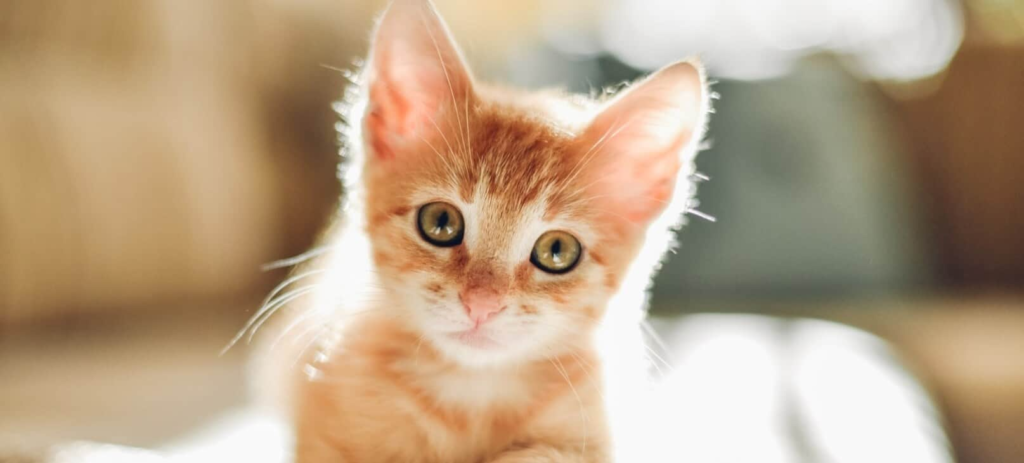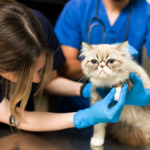Creating a stress-free environment is crucial for cats with health issues. Stress can exacerbate medical conditions, slow recovery, and negatively impact your cat’s overall well-being. By fostering a calm, supportive, and safe environment, you can help your feline friend manage their health issues more effectively. Here’s a comprehensive guide to creating a stress-free environment for cats with health issues.

1. Understand Your Cat’s Needs
1. Health Assessment:
- Veterinary Guidance: Start by consulting with your veterinarian to understand your cat’s specific health issues. Your vet will provide recommendations tailored to your cat’s needs, including any special requirements or restrictions.
2. Behavior and Preferences:
- Individual Needs: Each cat has unique preferences and behaviors. Pay attention to your cat’s likes and dislikes, and adapt their environment accordingly to reduce stress.
2. Create a Safe and Comfortable Space
1. Designated Resting Area:
- Comfortable Bedding: Provide a quiet, comfortable resting area where your cat can relax without disturbances. Soft bedding and a cozy space are essential for their comfort.
- Safe Haven: Ensure this area is away from household noise and activity, giving your cat a sense of security and privacy.
2. Easy Access to Essentials:
- Food and Water: Place food and water bowls in easily accessible locations. For cats with mobility issues, consider elevated or low-sided bowls to minimize strain.
- Litter Box: Ensure the litter box is easily accessible and kept clean. For cats with health issues, a low-entry box or one with high sides for easy access may be beneficial.
3. Minimize Stressors
1. Reduce Noise and Activity:
- Quiet Environment: Limit loud noises and sudden movements in your home. Creating a quiet environment can help reduce anxiety and prevent your cat from becoming overwhelmed.
- Calm Interactions: Encourage gentle, calm interactions with your cat. Avoid sudden or rough handling that could add to their stress.
2. Maintain Routine:
- Consistent Schedule: Cats thrive on routine. Keep feeding, grooming, and playtimes consistent to provide a sense of stability and predictability.
- Familiarity: Maintain familiar surroundings and objects, such as favorite toys and bedding, to offer comfort and reduce stress.
4. Provide Enrichment and Stimulation
1. Interactive Toys:
- Mental Stimulation: Offer interactive toys and puzzle feeders to engage your cat’s mind. Mental stimulation can alleviate boredom and distract from discomfort.
- Safe Play: Choose toys that are safe and appropriate for your cat’s health condition. Avoid toys that require excessive physical activity if your cat has mobility issues.
2. Environmental Enrichment:
- Scratching Posts and Cat Trees: Provide scratching posts and cat trees to allow your cat to engage in natural behaviors and maintain physical health.
- Window Perches: If possible, set up a window perch or catio where your cat can observe the outside world safely. This can offer mental stimulation and entertainment.
5. Monitor and Manage Health Issues

1. Regular Check-Ups:
- Vet Visits: Schedule regular veterinary check-ups to monitor your cat’s health and adjust treatment plans as needed. Your vet can provide guidance on managing your cat’s specific condition and any necessary adjustments to their environment.
2. Medication Management:
- Administer Medications: Follow your vet’s instructions for administering medications. Use treats or pill pockets if your cat is difficult to medicate, and ensure you are consistent with dosages.
3. Observe and Adjust:
- Behavioral Changes: Monitor your cat’s behavior and health closely. If you notice any changes or signs of distress, consult your vet for advice and make necessary adjustments to their environment.
6. Create a Calm Interaction Environment
1. Gentle Handling:
- Soft Touch: Use gentle, soothing touches when interacting with your cat. Avoid sudden movements or rough play that could stress or discomfort them.
- Respect Boundaries: Allow your cat to approach and retreat as they wish. Respect their need for space and avoid forcing interactions.
2. Use Calming Products:
- Pheromone Diffusers: Consider using feline pheromone diffusers or sprays that mimic calming scents to help reduce anxiety and stress.
- Calming Supplements: Consult your vet about calming supplements or treats that may help ease your cat’s anxiety, particularly if they are dealing with chronic stress or discomfort.
7. Conclusion
Creating a stress-free environment for cats with health issues involves understanding their specific needs, minimizing stressors, and providing a comfortable, enriching space. By implementing these strategies, you can help your feline friend manage their health issues more effectively, improve their quality of life, and promote a sense of well-being. Your attentive care and consideration will make a significant difference in your cat’s health and happiness. Always consult with your veterinarian for personalized advice and recommendations tailored to your cat’s unique condition.

